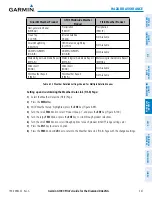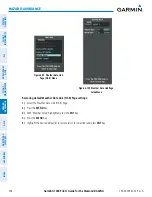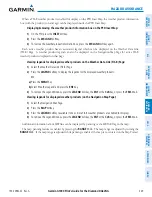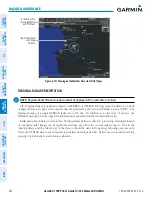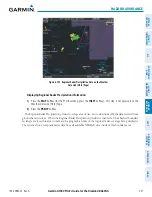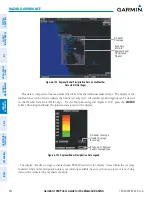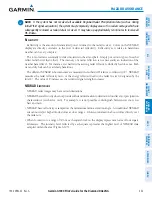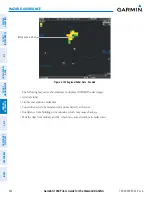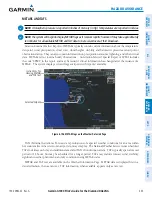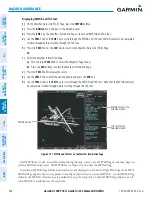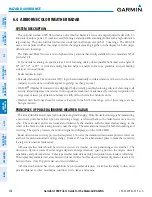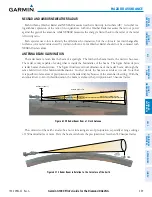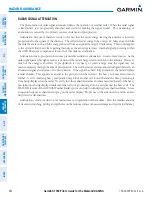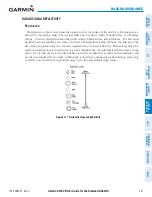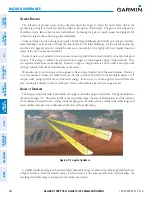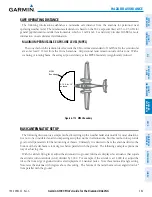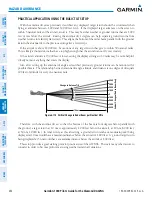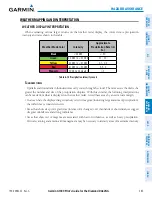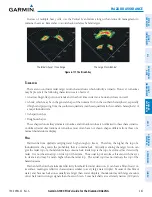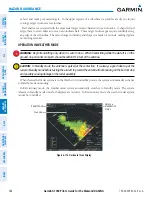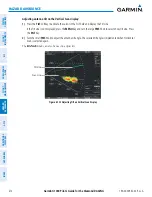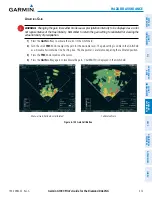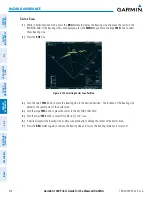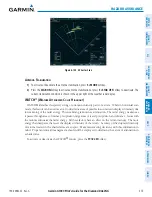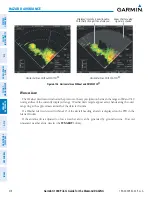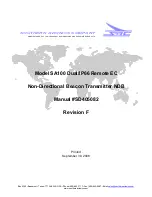
190-00962-02 Rev. A
Garmin G1000 Pilot’s Guide for the Diamond DA42NG
361
HAZARD AVOIDANCE
SY
STEM
O
VER
VIEW
FLIGHT
INSTRUMENTS
EIS
AUDIO P
ANEL
& CNS
FLIGHT
MANA
GEMENT
HAZARD
AV
OID
ANCE
AFCS
ADDITIONAL
FEA
TURES
APPENDICES
INDEX
RADAR SIGNAL REFLECTIVITY
P
ReciPitation
Precipitation or objects more dense than water, such as the surface of the earth or solid structures, are
detected by the weather radar. The weather radar does not detect clouds, thunderstorms, or turbulence
directly. It detects precipitation associated with clouds, thunderstorms, and turbulence. The best radar
signal reflectors are raindrops, wet snow, or wet hail. The larger the raindrop, the better the reflectivity. The
size of the precipitation droplet is the most important factor in radar reflectivity. Because large drops in a
small concentrated area are characteristic of a severe thunderstorm, the radar displays the storm as a strong
return. Ice crystals, dry snow, and dry hail have low levels of reflectivity as shown in the illustration, and
are often not displayed by the radar. Additionally, a cloud that contains only small raindrops, such as fog
or drizzle, does not reflect enough radar energy to produce a measurable target return.
Figure 6-111 Precipitation Type and Reflectivity

